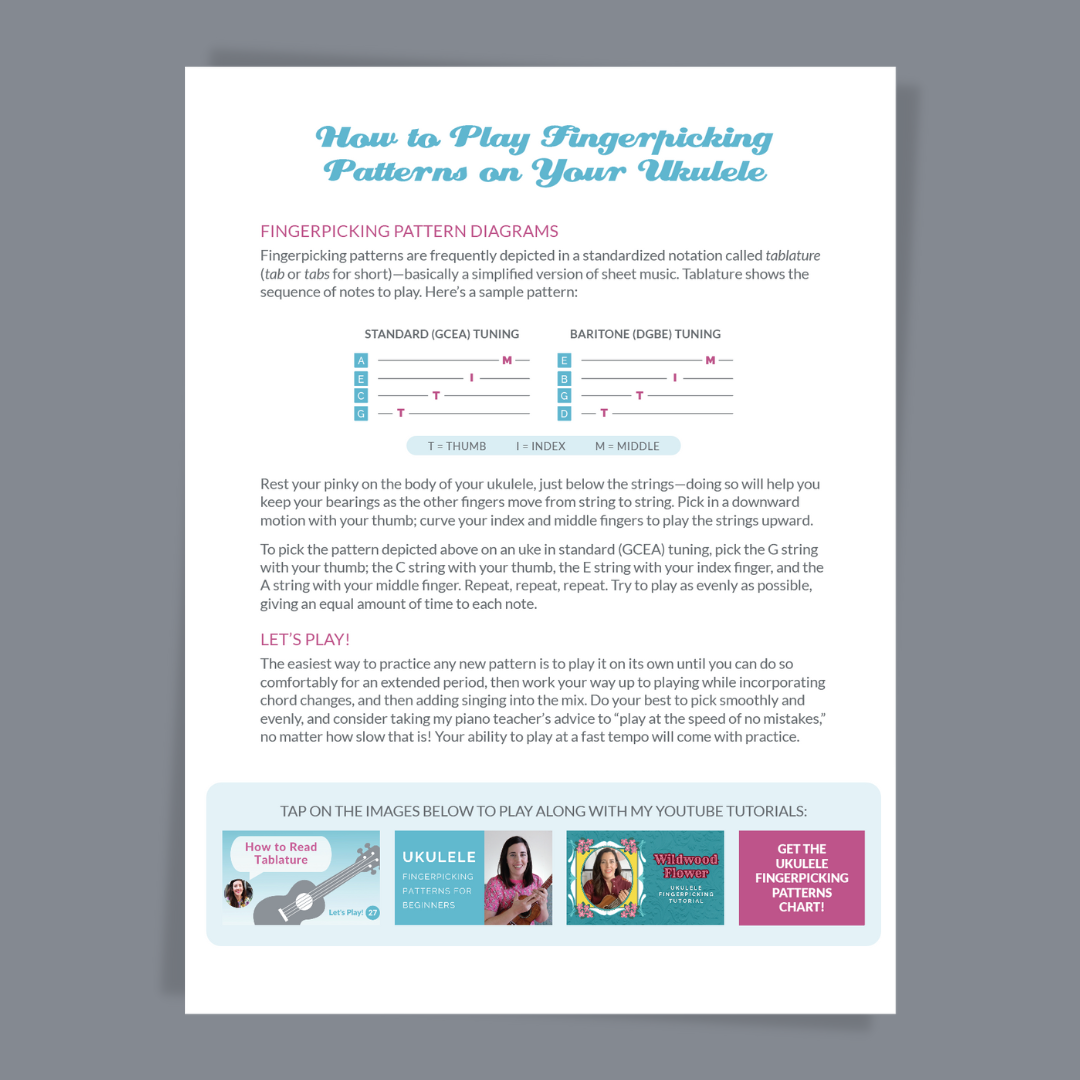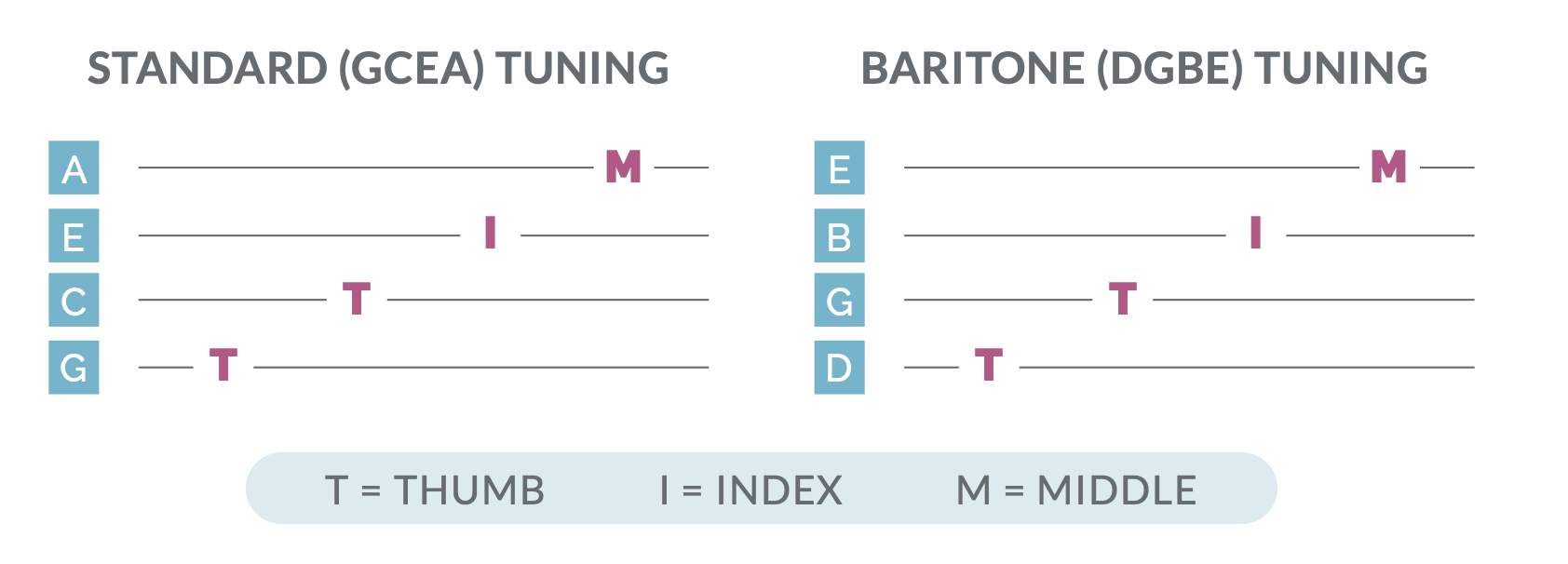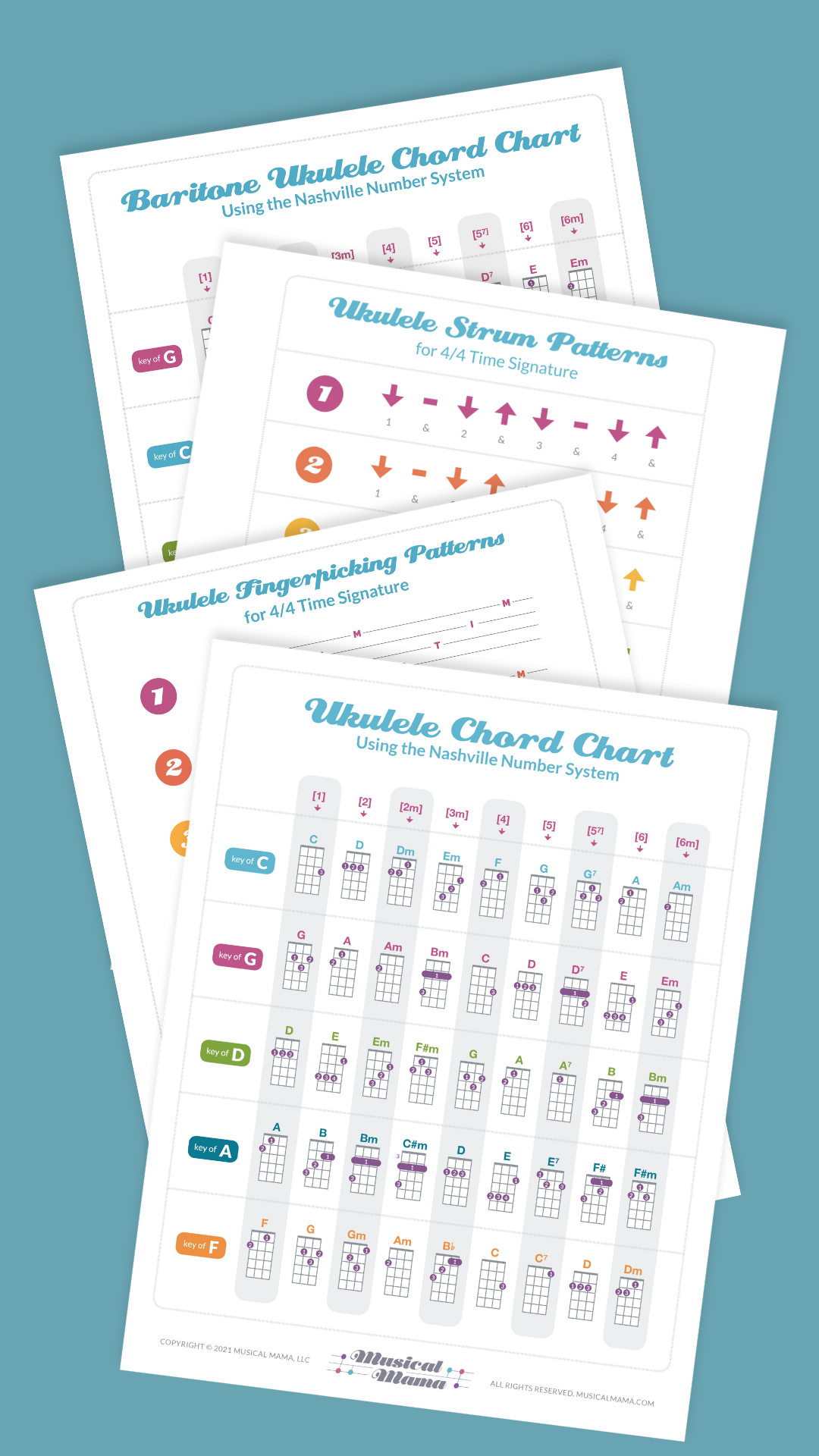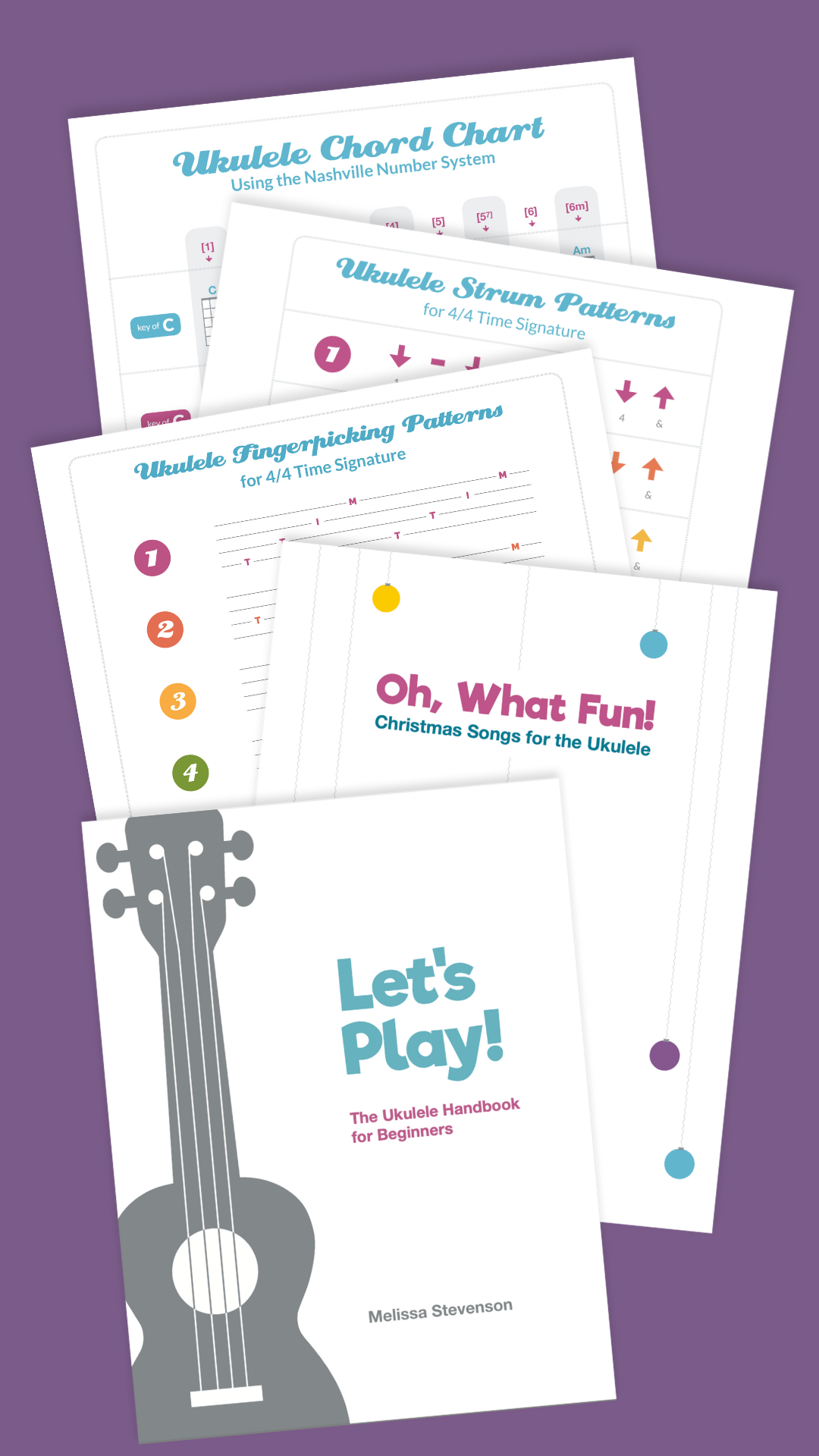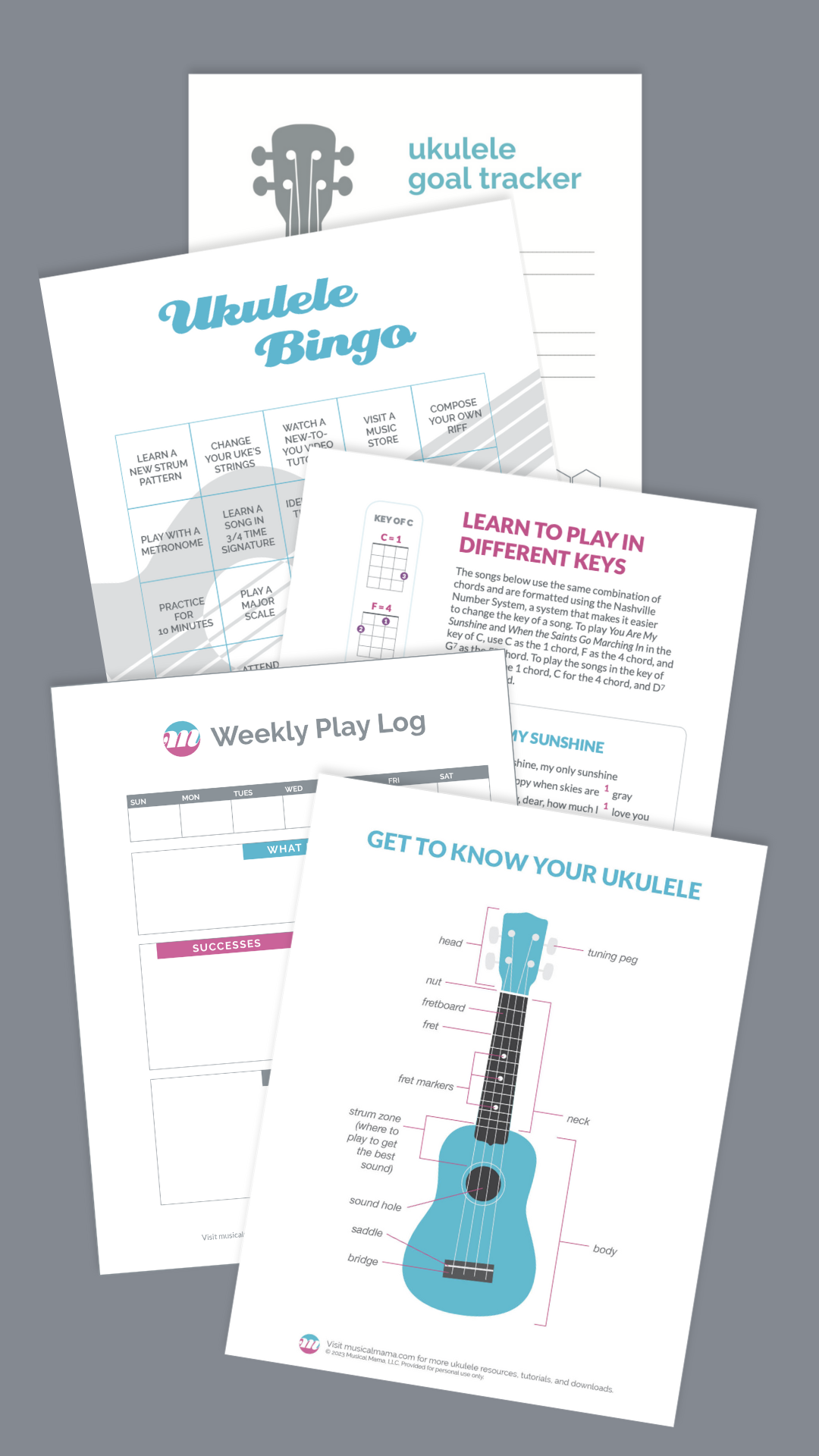Looking for a good gift for a music lover in your life? Musicians can be hard to shop for, so why not a book? Here’s a roundup of books that are either on my own wishlist or books I’ve read recently and recommend:
Read MoreThree Family-Themed Songs to Sing at Thanksgiving
Thanksgiving is rapidly approaching in the United States, and that means many of us will be traveling to be with extended family. With family on my mind, I thought I’d share three songs that I’ll be singing and strumming over the next week. Maybe you’ll want to add them into your repertoire, because they all sound great on the ukulele:
“Family is Family” by Kacey Musgraves
A sweetly humorous song about how, when it comes to family, “you get what you get and you don’t get to pick ‘em.” Play along with Kacey in the key of F with the F, Gm, C, and Bb chords, or use the transpose feature at the bottom of the page to change it to a friendlier key if needed.
2. “I Lovely Love My Family” by The Roots
My only exposure to the kids show Yo Gabba Gabba! comes through this song, so don’t ask me to explain what’s happening with the life-sized muppet-y characters! Nevertheless, the song is a winner with lyrics about love, peace, and gratitude. I used to sing this song to my kids all the time when they were little, and it sounds just as good as I remembered. The Roots play it in the key of A using the A, Bm, and D chords, but change it to the key of G to play it with the beginner-friendly G, Am, and C chords.
3. “I’ve Got the Joy” and “In My Family’s House”
I've Got the Joy is a short and sweet song that's pretty easy to memorize, and with only two chords, it's fairly easy to transpose it into different keys. In this tutorial, I show you how to play it in the keys of C and F, so you can pick which key works better for your vocal range. Then, we use the same melody and chords to play a holiday version of the song that you can customize! In My Family's House is a great song to sing and strum with kids, and you all can take turns creating verses that honor your family's holiday traditions.
I’ve Got the Joy and In My Family’s House are featured in my Americana songbook. Check it out!
Three Songs to Sing and Strum on Election Day
It’s election day here in the United States, which means a lot of Americans are feeling distracted by the prospect of voter counts and ballot results! If you can relate, consider playing one of these three folk songs (all featured in my Americana songbook) to commemorate this unique-feeling day:
Read MoreHow to Play "Keep on the Sunny Side" on the Ukulele, Easy Play-Along Video Tutorial
Keep on the Sunny Side is an American folk song that I describe as being "relentlessly optimistic." The composer, Ada Blenkhorn, tells us that there is a silver lining, no matter how dark our storm cloud.
Read MoreHow to Play Fingerpicking Patterns on Your Ukulele
For most of us, we begin playing our ukuleles by strumming them. And when we strum, we typically play all of the strings at once. When we fingerpick, we pluck strings individually. My introduction to fingerpicking came via a copy of Earl Scruggs and the 5-String Banjo. In his book, Scruggs outlines his renowned style of playing—it’s called three-finger picking because it utilizes the thumb, index, and middle fingers to play the strings. Classically trained string players are often taught the PIMA method, which adds the ring finger into the mix, but my picking feels much clumsier when I try to incorporate it. Perhaps I would feel differently if I had learned the PIMA method first, but I’ll never know. As is true for many areas of making music, there no singular way of doing things. Try these picking patterns using whatever combination of fingers feels most natural to you. So how can we fingerpick? Well, so long as you can keep a steady beat, you can play your strings however you’d like. But if you’re just starting out, it’s helpful to begin fingerpicking by playing a pattern.
Download My Free Fingerpicking Guide
How to Read Fingerpicking Pattern Diagrams
Fingerpicking patterns are frequently depicted in a standardized notation called tablature (tab or tabs for short)—basically a simplified version of sheet music. Tablature shows the sequence of notes to play. Here’s a sample pattern:
Rest your pinky on the body of your ukulele, just below the strings—doing so will help you keep your bearings as the other fingers move from string to string. Pick in a downward motion with your thumb; curve your index and middle fingers to play the strings upward.
To pick the pattern depicted above on an uke in standard (GCEA) tuning, pick the G string with your thumb; the C string with your thumb, the E string with your index finger, and the A string with your middle finger. Repeat, repeat, repeat. Try to play as evenly as possible, giving an equal amount of time to each note.
LET’S PLAY!
The easiest way to practice any new pattern is to play it on its own until you can do so comfortably for an extended period, then work your way up to playing while incorporating chord changes, and then adding singing into the mix. Do your best to pick smoothly and evenly, and consider taking my piano teacher’s advice to “play at the speed of no mistakes,” no matter how slow that is! Your ability to play at a fast tempo will come with practice.
Ready to give fingerpicking a try? These videos can help:
Looking for more? My Fingerpicking Patterns Chart has eight versatile fingerpicking patterns that work for ukes in standard and baritone tuning!
How to Strum Your Ukulele - Download My Free Guide for Brand New Players
Just getting started on the ukulele? I’ve created a free one-page PDF to help you get strumming right away!
"Take This Hammer," a Three-Chord Protest Song for the Ukulele
Take This Hammer is one of the fifteen songs featured in Americana, 15 Easy Folk Tunes for the Ukulele. In the book, I share a brief bio or background for each of the songs. Here’s what I included for Take This Hammer:
Music can provide an emotional way to connect us with our complicated American history. Work songs like Take This Hammer come to us from the Black Americans who were imprisoned and leased out as laborers after the Civil War. The lyrics envision an escape from a brutal reality, as this song was sung by men working on the railroad line under the watchful eyes of prison guards. Singing gave the men a beat that they could swing their hammers to, so even if they experienced some emotional relief in singing, it’s important to note that they were only allowed to sing rebellious songs like Take This Hammer because doing so made them more efficient workers. Take This Hammer is a brilliant protest song that conveys an intense yearning with its concise, haunting lyrics, and I hope you find it as moving as I do.
Play along with me, won’t you?
LEARN MORE ABOUT THE SONG
Protest Song of the Week from Shadowproof
Take This Hammer (1 of 2) from Cultural Equity
Take This Hammer (2 of 2) from Cultural Equity
African-American Work Songs from The History Engine
Negro Prison Songs from the Mississippi State Penitentiary from archive.org
Prison Worksongs from Smithsonian Folkways
Resources referenced in the video
VIDEO DETAILS
Played in the Key of A using the A, D, and E7 chords using Strum Pattern #5 from my strum pattern chart
Gamify Your Music-Making with Ukulele Bingo Cards (Free Download)
Gamify your music-making with my free Ukulele Bingo Cards! Use the pre-filled page to inspire your ukulele practice, or use the blank sheet to create your own.
Read MoreLearn to Play the Eight-Bar Blues on the Ukulele with "Trouble in Mind"
Trouble in Mind is a beautiful blues song that’s excellent for helping us develop our singing and strumming skills. In this tutorial, I play my baritone ukulele in the key of G, using just the G, C, and D7 chords, but you can use my chord charts (available for standard and baritone tuning) to easily find the chords for the eight-bar blues in five different keys!
Read MoreJennie Jenkins Might Be the Silliest Song I've Shared (So Far)
Jennie Jenkins is one of the songs included in my newest book, Americana: 15 Easy Folk Tunes for the Ukulele, which is AVAILABLE NOW. Go check it out!
Read MoreA Not-So-Spooky Two-Chord Song for Halloween
Happy October! The weather has cooled down, the leaves are falling, and autumn is in full swing where I live, so today I wanted to share a two-chord song that’s perfect for this time of year…
Read MoreMaking Time for Music-Making
As my kids get older, our family life gets busier, and I find myself having to be even more intentional about how I spend my time. I know from experience that I’m happier when I’m engaging with my instruments on a consistent basis, so lately I’ve been seeking out ways to make it easier to find time to play. Here are a few ideas I’m incorporating that might be helpful to you as well:
Read MoreLearn to Play "Wildwood Flower" on the Ukulele and Baritone Ukulele
Wildwood Flower is a beautiful ballad that uses just three chords. In this tutorial, I show you how to play it in the key of G with a beginner-friendly fingerpicking pattern. Play along on your baritone uke (like the one I’m playing) or on your uke in standard tuning—I show the chords for both!
Read MoreNEW! Chord Chart for Baritone Ukuleles
Today I’m happy to announce I’ve added a new product to my Shop— a chord chart for baritone ukuleles! It features the same formatting as my chord chart for standard ukes. Both charts feature the same formatting so that you can easily learn the most important chords for the five most popular keys for music to be set in.
Read MoreWhat is a Baritone Ukulele?
The baritone ukulele is a delightful instrument that combines the accessibility of the ukulele with the sound of a guitar. Like standard ukuleles, baritone ukuleles have four strings but with a tuning that’s similar to a guitar. Let’s compare…
Read MoreA Holiday Gift for You (Introducing Ukulele Karaoke)
Today I’m happy to share the first in a series I’ve been thinking of as Ukulele Karaoke—audio files you can sing and play along to, whether you’re jamming with friends or strumming on your own. To celebrate the holidays, and to express my gratitude for your support, I’m offering an MP3 of Jingle Bells as a free download!
Read MoreBasic Beats: Backing Drum Tracks You Can Jam Along To!
Playing along to a metronome is a great way to build up your sense of timing, but hearing the “click-click” for minutes on end can get a little tiring! You can accomplish the same goal, and have a little more fun, by playing along to a backing track. Here I’m sharing a very basic rock beat for 4/4 time signature set at four different tempos: 60 bpm, 80 bpm, 100 bpm, and 120 bpm. Play along with them, won’t you?
Read More"Bury Me Beneath the Willow" Ukulele Tutorial — Can You Memorize This Three-Chord Song?
My favorite way to play the ukulele is without having to reference any sheet music— it feels very freeing to need nothing more than my uke and tuner. But this wasn’t always possible for me. For the first several years of my strumming life, I was honestly scared to try to play without having a songbook to look at! How will I know what chord comes next? What if I make a mistake? I quickly learned that playing without looking at the music isn’t as hard as I thought it would be, and the stakes were lower than I thought. Nothing terrible happens if I play the wrong chord or forget a line of lyrics. A willingness to try and the acceptance that it will take some trial and error is all it takes (well, that and an ukulele!).
Read MoreClawhammer Ukulele Video Tutorial, Playing the Strum with a Three-Chord Song
In my newest video, I build on what I covered in my first clawhammer tutorial and show you how to play the clawhammer strum with Cindy, a jaunty folk tune that’s probably hundreds of years old. When I share these American folk songs, I'm frequently conflicted as to how much history to share. I want to properly give credit when I can, but I'm not a music historian and worry about spreading incorrect information. So here's a little of what I do know:
Read MoreMy Musical Goals for 2022
Happy 2022!
My birthday falls in the first week of January, so the new year always feels like a double reset for me. Like many others at this time of year, I find myself reflecting on the past and looking to the future, and I thought it would be fun to share what some of my music-making goals for 2022 are. In addition to setting specific goals, I also pick an overarching theme for the year. In the past I’ve chosen themes that were designed more for my life as a mom—some prior themes were “play,” “home,” and “style.” But this year I’m planning something different. This year my theme is…
Read More



